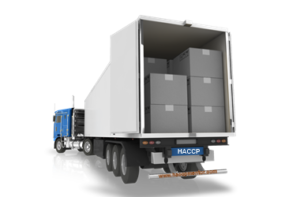The quality and safety of your incoming goods and raw materials could mean the difference between your finished product being safe to eat and killing your customers. For this reason, it is of paramount importance that an adequate system is in place to monitor all incoming raw materials and goods that will have an impact on the safety and quality of your finished food product.
What to monitor
When deciding what parameters to monitor, you need to consider the overall food safety risk of the actual raw material. Hopefully you have completed a risk assessment of all of your incoming raw materials based on their physical, chemical, microbiological and quality status. Based on the outcome of your raw material risk assessment you may then monitor for:
- Presence of microbiological contamination eg. salmonella, E.Coli, Listeria
- Any visual contaminates on the external surfaces eg. dirt, dust, bird droppings
- The overall condition of packaging eg. are there any rips, breaks, torn and broken sections.
- Presence of chemical contamination eg. pesticides, herbicides
- Presence of undeclared allergens eg. milk, soy, peanuts
- Compliance to the raw material specification eg. quality attributes of size, colour, weight, count
Undertaking monitoring activities
There will be different methods of monitoring based on what it is you are going to monitor. Some of the more common methods used to monitor the overall food safety and quality of incoming raw materials include:
Visual Assessment – this involves physically and visually looking at the raw material for any obvious defects. This method works well for assessing the level of visual or physical contaminates. A visual assessment can also be undertaken when assessing quality attributes of colour, size and count against the raw material specification and also the shelf life / traceability coding of the raw material.
Laboratory testing (in conjunction with a hold and release program) – this involves taking a sample of the raw material and testing it for the targeted hazards. The most common testing completed on raw materials (that I see as a food safety auditor) includes Salmonella, E.Coli, various different Allergens, Pesticides, protein and moisture content and illegal preservatives. In many situations, the supplier may provide the testing results of the actual batch that you have received. This is excellent when controlling your own individual food businesses food safety costs.
Indicator testing – undertaking a physical temperature check of potentially hazardous raw materials may indicate a potential for microbiological contamination. It may also be a legal requirement in your country of manufacture that only potentially hazardous foods are received within temperature control.
Frequency of Monitoring
Working out when or the frequency of monitoring incoming raw materials can be tricky. You need to find a suitable balance between ensuring compliance and not being cost prohibitive. Completing a frequency risk assessment is useful in this situation as long as it includes the compliance history of the raw material. You will also need to check what your certification standard and governing food safety legislation requires. For example, temperature monitoring may need to be completed for every product that comes into your business.
Responsibility for monitoring 
For any program to be successful, responsibility needs to be allocated. This means that you should allocate a position or person who is responsible for making sure that all monitoring of incoming raw materials is completed. If you allocate one person, make sure that there is a back-up trained when your primary person is away or not available.
Verifying your incoming raw material monitoring system
Like any food business procedures, all raw material monitoring procedures should be documented in accordance with your local food legislation and your certification standard. Records of all monitoring activities are to be kept to verify the compliance and performance of this system. Additionally, all staff involved in this process should be adequately trained and deemed competent.




Hi,
How do you train/validate visual inspections like color? Just like e.g. “is white, not yellow or green”, or “correct white, not another white”?
Wolf
Great question Wolf. I would suggest having photos which show both the acceptable and unacceptable visual parameters for each of your products. You can then compare the product against the photo/model to ascertain compliance.
Nice tips to take care of your products.
Thanks Lisa